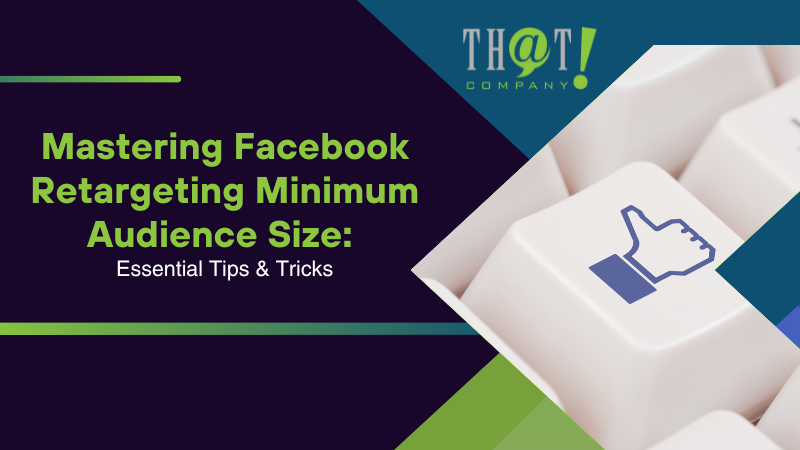
To run a successful Facebook retargeting campaign, you need a Facebook retargeting minimum audience size of 100 people. This ensures your ads reach enough users to be effective. This article covers everything you need to know about managing your audience size to optimize your Facebook ad campaigns.
Key Takeaways
- Understanding and managing Facebook retargeting audience size is crucial for maximizing conversion rates and ad effectiveness. Aim for minimum sizes of 100 for retargeting and 1,000 for small businesses.
- Utilizing That! Company’s white label services allows agencies to enhance social media content while maintaining a professional appearance, ultimately boosting client satisfaction and revenue opportunities.
- Implementing advanced techniques like dynamic ads and cross-channel strategies can significantly enhance engagement and conversions in retargeting campaigns, ensuring your ads reach the right audience effectively.
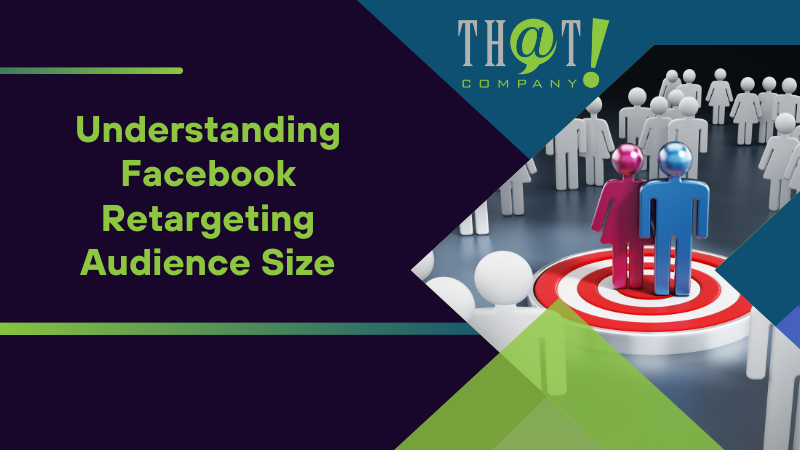
Understanding Facebook Retargeting Audience Size
Facebook retargeting is a PPC strategy that targets users already familiar with your brand, showing them tailored Facebook ad campaigns to encourage meaningful actions. Audience size is crucial for Facebook ad campaign success as it affects ad delivery and frequency. Understanding the Facebook retargeting minimum audience size helps ensure your ads reach enough people to perform effectively without wasting budget.
An effective audience size maximizes the chances of conversion and enhances brand recall among consumers who have interacted with your business. Proper targeting in retargeting campaigns is crucial for success and higher conversion rates.
Retargeting previous visitors reminds them of your brand at critical decision-making moments, leading to higher engagement and conversion rates. Managing your retargeting audience size is the first step to successful campaigns on Facebook.

Key Benefits for Agencies Using That! Company’s White Label Social Media Services
Agencies that partner with That! Company’s white label social media management services can maintain a professional appearance while saving time and reducing operational costs. Leveraging external providers allows agencies to enhance social media content quality and consistency, ensuring top-notch service for clients without additional staff or training. This lets agencies focus on core strengths while expanding service offerings under their brand.
That! Company’s white label social media marketing services offer advanced analytics and performance tracking, optimizing campaigns for ROI. Agencies can depend on their expert team for branded graphics, videos, and copy, maintaining a professional presence across social platforms while receiving full credit, boosting client satisfaction and revenue opportunities.
Minimum Audience Size for Effective Retargeting
A critical aspect of Facebook retargeting is having a sufficient audience size. The minimum required is 100 people, ensuring your ads reach enough users to be effective and impactful.
For video retargeting, an audience size of 50 to 100 people is ideal for small-scale or highly targeted campaigns. Small businesses should aim for 1,000 to 10,000 to achieve better engagement and maximize efforts, balancing reach and relevance.
Effective retargeting enhances brand recall among previous consumers. For Lookalike Audiences, the minimum size is also 100 people from one country, helping to expand reach to new, similar audiences.
Why Audience Size Matters in Retargeting Campaigns
Audience size in retargeting is crucial for campaign success. Retargeted users are 70% more likely to convert than cold audiences. Since remarketing customers make up only 8% of website visitors, a focused audience strategy is vital to maximize this valuable group’s potential.
Custom Audiences tailor experiences and enhance ad effectiveness. Targeting previously engaged users amplifies retargeting campaigns, but failing to exclude converted users can limit audience growth. Proper management ensures ads reach the right people without wasting impressions. Mobile app custom audiences can further refine these strategies.
Users may not convert immediately after visiting a website, often exploring other options or not ready to commit. Focusing on properly sized retargeting audiences leads to higher conversion rates than targeting new users, significantly boosting campaign performance and ROI.
Optimal Audience Sizes for Different Campaign Goals
Ideal audience size varies by campaign objectives. For brand awareness, 500,000 to 1 million users is recommended to balance reach and targeting precision, reaching a broad but relevant audience.
For driving conversions, smaller audiences can be more effective, allowing for personalized, targeted messaging that leads to higher engagement and conversion rates. Tailoring audience size to campaign goals is key to achieving desired outcomes.
Audience size is crucial for effective Facebook retargeting, especially for brand awareness. Understanding optimal sizes for different goals helps create strategies that resonate with your target audience and maximize your advertising budget.
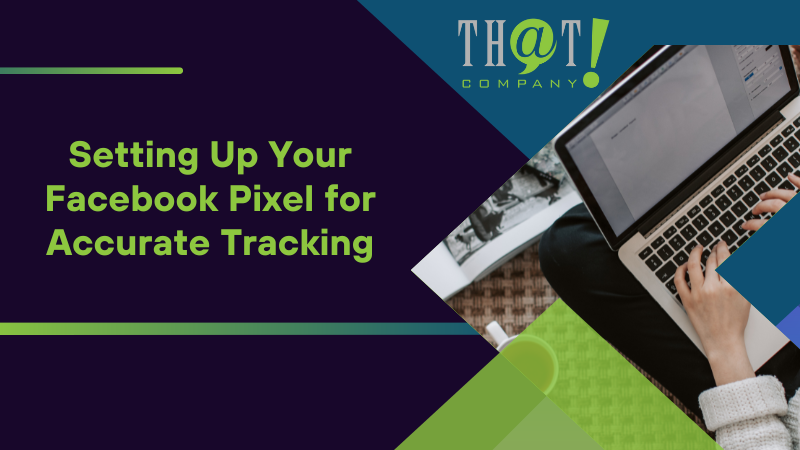
Setting Up Your Facebook Pixel for Accurate Tracking
Setting up your Facebook Pixel is essential for successful retargeting. It tracks site interactions to build audiences, targeting users already interested in your brand, and helps analyze the effectiveness of your ads.
First, open Ads Manager or Facebook Ads Manager to set up your Pixel. Include the Pixel code on every page or in the website template to track all user actions.
Install the Pixel through Tag Manager integration, manual installation, or by copy-pasting the code. Once installed, it collects user data, enabling the creation of custom audiences based on specific events.
Installing the Facebook Pixel
Installing the Facebook Pixel involves straightforward steps. First, create a Pixel if you don’t have one. Then, navigate to Ads Manager or Facebook Business Manager and follow the instructions to get your Pixel code.
Install the Facebook Pixel code using Tag Manager integration, manually inserting it into your HTML, or copy-pasting it into your template. Ensure the code is on every page to capture all user interactions accurately.
Configuring Custom Events for Better Tracking
Configuring custom events tracks specific user actions relevant to your business. Add extra code to your Pixel to track actions like purchases, sign-ups, or video views, allowing for more targeted ads based on user behavior.
Verifying your Pixel implementation ensures it records data correctly and fires on desired events. Create custom audiences based on these events for better ad targeting, and segment these audiences for more precise targeting based on user actions.
Verifying Your Pixel Implementation
Verifying your Pixel implementation ensures accurate tracking. The Meta Pixel Helper, a Chrome extension, checks if your Pixel functions correctly by reviewing the website’s code. When functioning properly, the Pixel Helper icon turns blue and displays the number of Pixels detected.
Common issues the Pixel Helper identifies include invalid Pixel IDs, multiple activations of the same event, or the Pixel not loading. Verify functionality by checking the Pixel Helper popup after clicking its icon on your website.
For optimal performance, place the Pixel in the HTML code before the closing </head> tag.

Creating Custom Audiences Based on Website Traffic
Creating custom audiences based on website traffic targets users already interested in your brand. The Facebook Pixel tracks site interactions, collecting user data to enable precise Facebook custom audience for your ads.
Meta Ads Manager lets you target custom website audiences with precision. Create audiences based on criteria like website visitors, video viewers, and on-site engagers, tailoring your ads to engage or promote offers to those already familiar with your brand.
Building a Website Custom Audience
To build a website custom audience, install the Facebook Pixel to collect data on user interactions, which can then be used to create custom audiences by matching Facebook profiles to people who visited specific pages or performed actions on your site.
Examples of custom events to track include lead form submits, adding items to carts, viewing videos, and visiting specific pages. Structuring these events carefully captures relevant user actions and unlocks advanced retargeting capabilities.
Refine your Custom Audience by setting time frames and additional filters, such as excluding users who recently made a purchase.
Segmenting Audiences for More Targeted Ads
Segmenting your audiences is crucial for targeted ads. For audiences above 500,000, segment them into smaller custom audiences to improve targeting precision, allowing for more personalized ads and better engagement and conversion rates.
Limit the number of remarketing audiences targeted at once to 2-3 for optimal effectiveness. Engagement Custom Audiences, involving people who interacted with your brand on platforms like Facebook or Instagram, are particularly valuable.
Combining customer engagement metrics with demographic data significantly improves custom audience targeting effectiveness.
Using Lookalike Audiences for Broader Reach
Lookalike audiences expand your reach by targeting new people similar to your best existing customers. To create one, identify your most valuable custom audiences in Ads Manager, use the ‘Create Audience’ feature, and select ‘Lookalike Audience’, choosing your desired country and audience size.
Segmenting custom audiences based on behaviors, demographics, or engagement levels enhances the quality of lookalike audiences, making ads more effective. This approach ensures relevance to your business, increasing the chances of achieving marketing goals.
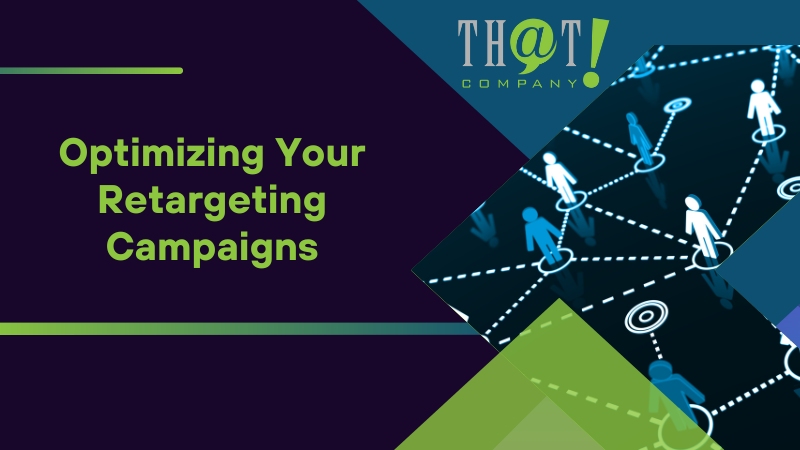
Optimizing Your Retargeting Campaigns
Optimizing retargeting campaigns maximizes effectiveness. An appropriately sized audience enhances ad performance, ensuring ads reach potential customers likely to convert. Using advanced targeting features and engagement data from multiple channels significantly enhances engagement. Leveraging white label services for agencies allows you to offer expert retargeting strategies while focusing on your core business operations.
Using diverse ad campaigns formats significantly boosts retargeting effectiveness. Regularly changing ad creatives reduces ad fatigue and improves engagement. Integrating efforts across platforms like email and social media amplifies campaign impact.
Crafting Compelling Ad Creatives
Crafting compelling ad creatives is critical for the success of your retargeting campaigns. Tailored creatives significantly boost relevancy and conversions in retargeting campaigns. Structuring Facebook retargeting ads should consider audience familiarity and current trends.
Creating multiple ads under one campaign targeted to different custom audiences is suggested for better results. For instance, MOO demonstrated effective retargeting by using varied ads for different products to connect with separate audience segments. Using customer engagement history allows for tailored retargeting strategies based on user actions.
Adjusting Bid Strategies for Better Performance
Adjusting bid strategies is crucial for ensuring cost-efficient scaling of your retargeting ads. Setting appropriate bids and budgets involves understanding bid strategies, expected CPMs, and budget management tips. It’s advised to increase budget allocations for retargeting ads that demonstrate the highest effectiveness.
Properly managing your bids and budgets can significantly improve the performance of your retargeting campaigns. By allocating more resources to high-performing ads, you can maximize your return on investment and ensure your ad spend is used effectively.
Monitoring and Tweaking Campaigns
Regularly analyzing ad performance metrics is essential for ongoing campaign adjustments to maximize conversion rates. Consistent monitoring and optimization of audiences is necessary for maintaining strong retargeting performance.
Regular updates to audience segments are crucial for maintaining the effectiveness of retargeting ads. Additionally, regularly removing inactive users from your audiences can help maintain engagement and ensure that your ads are reaching the most relevant users.
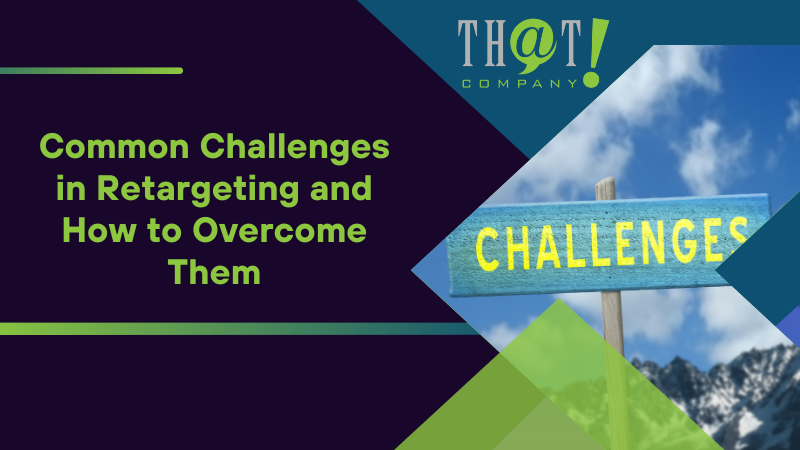
Common Challenges in Retargeting and How to Overcome Them
Facebook retargeting faces common challenges such as low audience size, poor ad performance, and issues with the Facebook Pixel. An audience size under 50,000 can result in struggles to spend the budget effectively and may lead to higher CPMs. Understanding the Facebook retargeting minimum audience size is essential when troubleshooting and improving the performance of retargeting campaigns.
If issues with the Facebook Pixel persist, contacting Facebook Concierge support can provide solutions. Additionally, overusing Facebook Custom Audiences carries the risk of excluding a large audience of potential customers, so it’s important to manage your audiences carefully.
Troubleshooting Low Audience Size
Troubleshooting low audience size involves several steps. Use a free Chrome extension that indicates if the pixel is installed and functioning. If there is no data from the Facebook Pixel, verify that the Pixel code is on all pages, check for site errors, and use the Pixel Helper.
Visitors who spend less time on your site may not be captured in your retargeting audience. Including special offers or discount ads in retargeting for visitors who didn’t convert can help increase your audience size and improve conversion rates.
Addressing Poor Ad Performance
Addressing poor ad performance requires confirming that events are mapped properly and checking parameter values to identify issues with the Facebook Pixel. A frequency of 4.0 and higher can negatively impact Facebook retargeting campaigns.
Retargeting Facebook followers can significantly increase engagement and conversions. Creating more unique ad creatives can effectively mitigate ad fatigue in Facebook remarketing campaigns. Regularly refreshing your ad creatives and experimenting with different formats can help maintain high engagement levels.
Keeping Audiences Fresh and Relevant
Keeping your audiences fresh and relevant is essential for maintaining the effectiveness of your retargeting campaigns. Regularly updating customer lists ensures that your retargeting campaigns remain relevant and effective over time.
Timely updates to your audiences help address changing customer behaviors and preferences, keeping your ads impactful. Implementing a schedule for audience refreshing can help maintain engagement and avoid ad fatigue.

Advanced Retargeting Techniques
Advanced retargeting techniques can take your retargeting campaign to the next level. Using dynamic ads can personalize the shopping experience by showcasing products that users have previously viewed. Cross-channel retargeting strategies allow marketers to create a cohesive approach, leveraging multiple platforms to engage customers effectively.
By creating custom audiences from existing customer and email lists, you can specifically target those known customers. Integrating customer lists into retargeting strategies enhances targeting effectiveness by leveraging existing customer data for retargeting campaigns.
These techniques help in re-engaging visitors through promotions and offers, maximizing engagement and conversion opportunities across marketing channels.
Dynamic Ads for Personalized Retargeting
Dynamic ads automatically adjust content based on user behavior, enhancing ad relevance. These ads use algorithms to tailor the content shown to users based on their interactions with your brand.
Implementing dynamic ads can significantly boost engagement and conversion rates in retargeting efforts. This personalized approach ensures that users see ads that are highly relevant to their interests, increasing the likelihood of conversion.
Cross-Channel Retargeting Strategies
Cross-channel retargeting strategies allow you to create a cohesive approach by leveraging multiple platforms to engage customers effectively. Dynamic ads are personalized advertising solutions that automatically adjust content based on user behavior, enhancing the relevancy of retargeting efforts.
Integrating customer lists into retargeting strategies helps reach existing customers across different channels, leading to more targeted advertising efforts. A cohesive retargeting strategy that combines dynamic ads and customer list integration maximizes engagement and conversion opportunities across marketing channels.
Integrating Customer Lists for Enhanced Targeting
Integrating customer lists into your retargeting campaigns allows you to target Facebook users without a Pixel. Use customer lists and engagement data to expand retargeting audiences beyond the Facebook Pixel.
Creating custom audiences involves uploading email lists to match with user profiles, enhancing targeting effectiveness by leveraging existing customer data. This approach ensures that your retargeting campaigns are highly targeted and effective, leading to higher engagement and conversion rates.

Summary
Mastering Facebook retargeting is a game-changer for any digital marketing strategy. From understanding the importance of the Facebook retargeting minimum audience size to setting up your Facebook Pixel and creating custom audiences, each step plays a vital role in the success of your campaigns. Optimizing your retargeting efforts with compelling ad creatives, adjusting bid strategies, and regularly monitoring your campaigns ensures that you stay ahead of the competition. Partnering with a white label SMM company can further streamline these efforts, providing expert support and tailored solutions for your business.
By leveraging advanced retargeting techniques like dynamic ads and cross-channel strategies, you can further enhance your campaigns and achieve exceptional results. Remember, the key to successful retargeting lies in continuously refining your strategies and staying updated with the latest trends and tools. With the insights and tips shared in this guide, you’re well on your way to mastering Facebook retargeting and driving meaningful engagement and conversions.
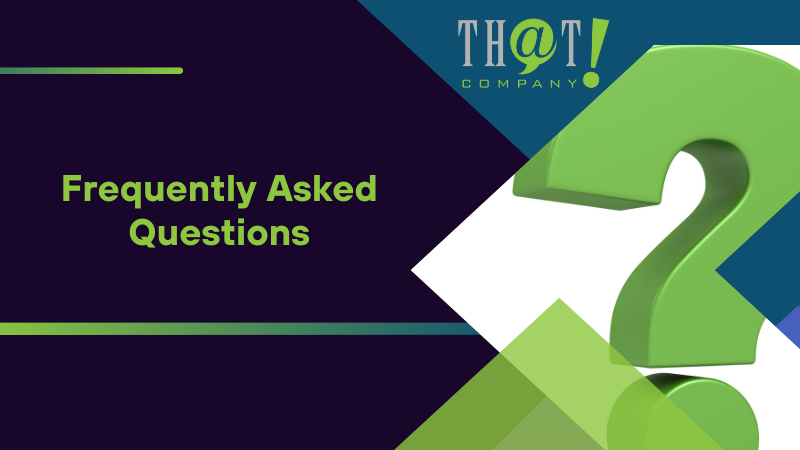
Frequently Asked Questions
What is the minimum audience size required for Facebook retargeting?
For successful Facebook retargeting, aim for a minimum audience size of 100 people to make your efforts impactful and effective!
How can I verify if my Facebook Pixel is functioning correctly?
To verify your Facebook Pixel, simply install the Meta Pixel Helper Chrome extension, which will help you ensure it’s correctly set up on your website. Take this small step to boost your ad performance today!
Why is audience size important in retargeting campaigns?
Audience size is essential in retargeting campaigns because it influences how effectively your ads are delivered and the frequency with which they reach potential customers. A well-targeted audience can lead to higher conversion rates, so focus on optimizing your audience for the best results! A white label partnership can help you maximize the potential of your retargeting campaigns by providing expert strategies and seamless execution tailored to your business needs.
What are dynamic ads, and how do they work in retargeting?
Dynamic ads are powerful tools that automatically tailor content based on user behavior, making your retargeting efforts more relevant and effective. By showcasing products or services that users have previously interacted with, you can dramatically increase engagement and conversions!
Can I retarget Facebook users without a Pixel?
Absolutely! You can retarget Facebook users without a Pixel by leveraging customer lists and engagement data to create targeted audiences. Embrace this strategy and boost your marketing efforts!

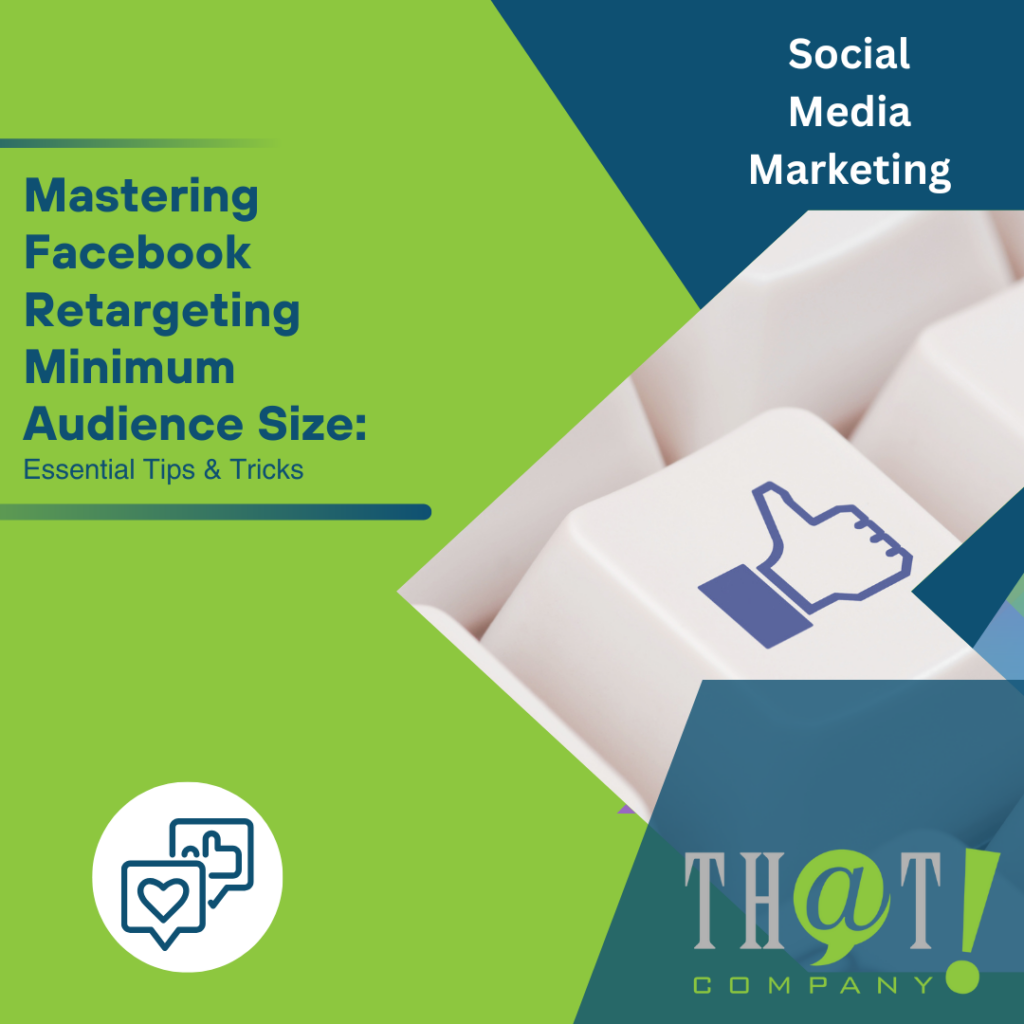




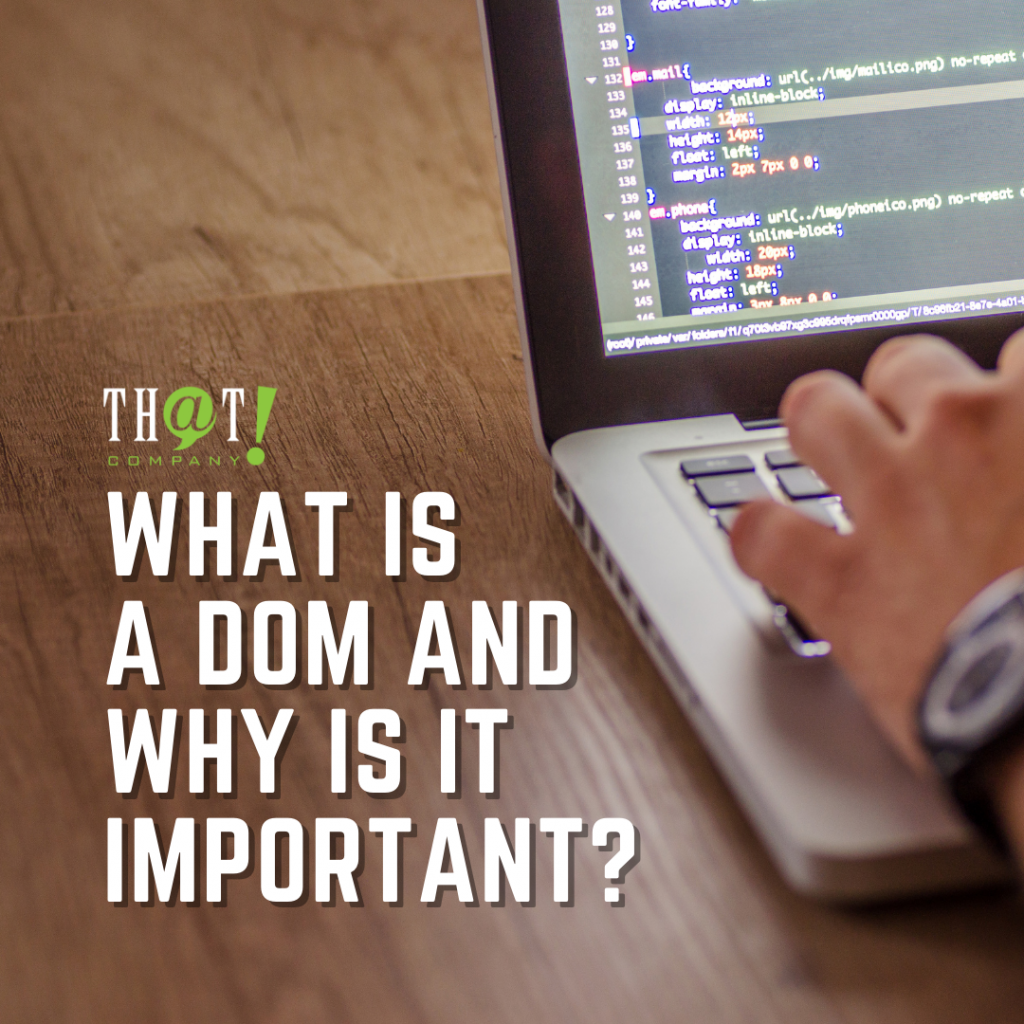



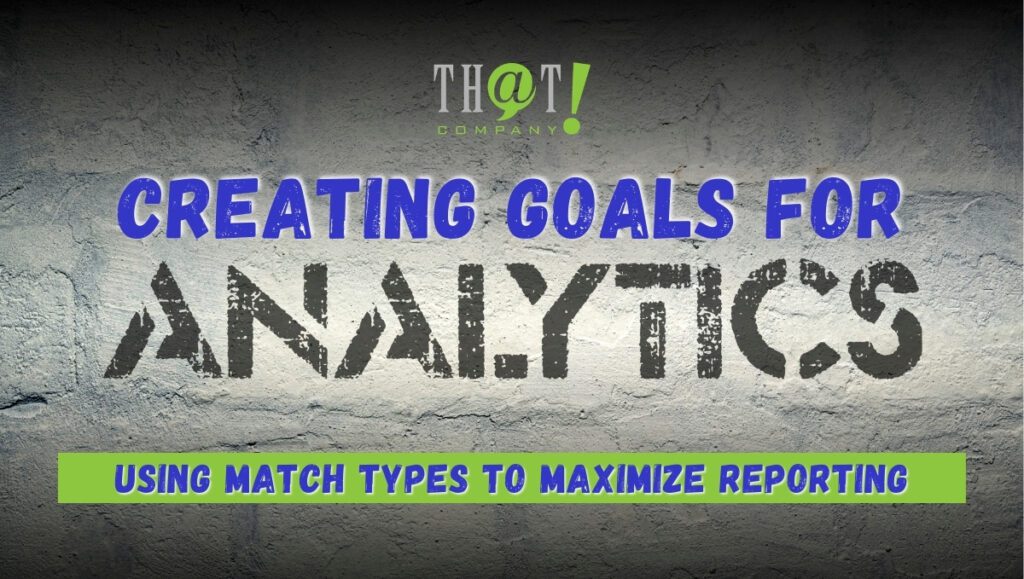


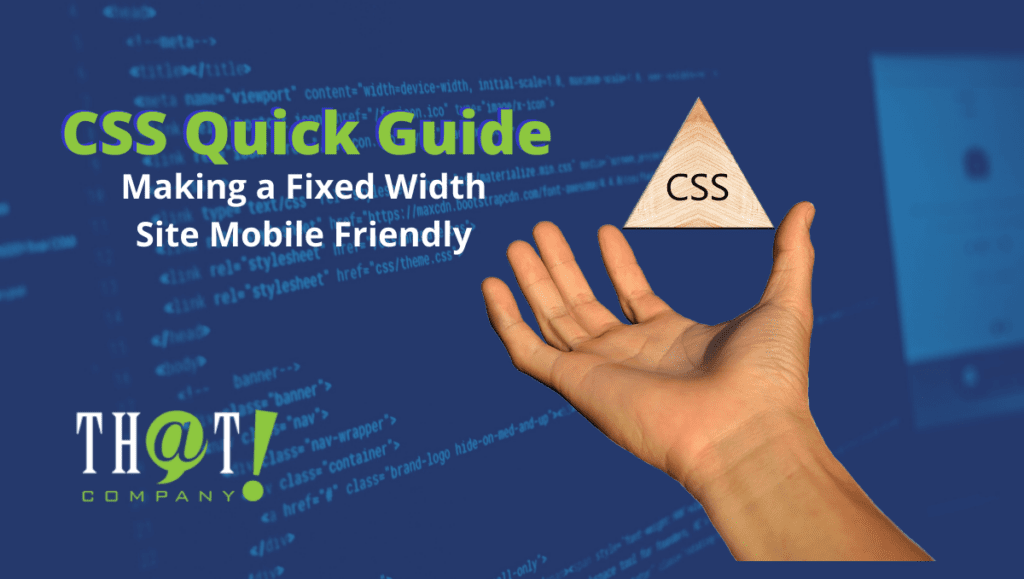

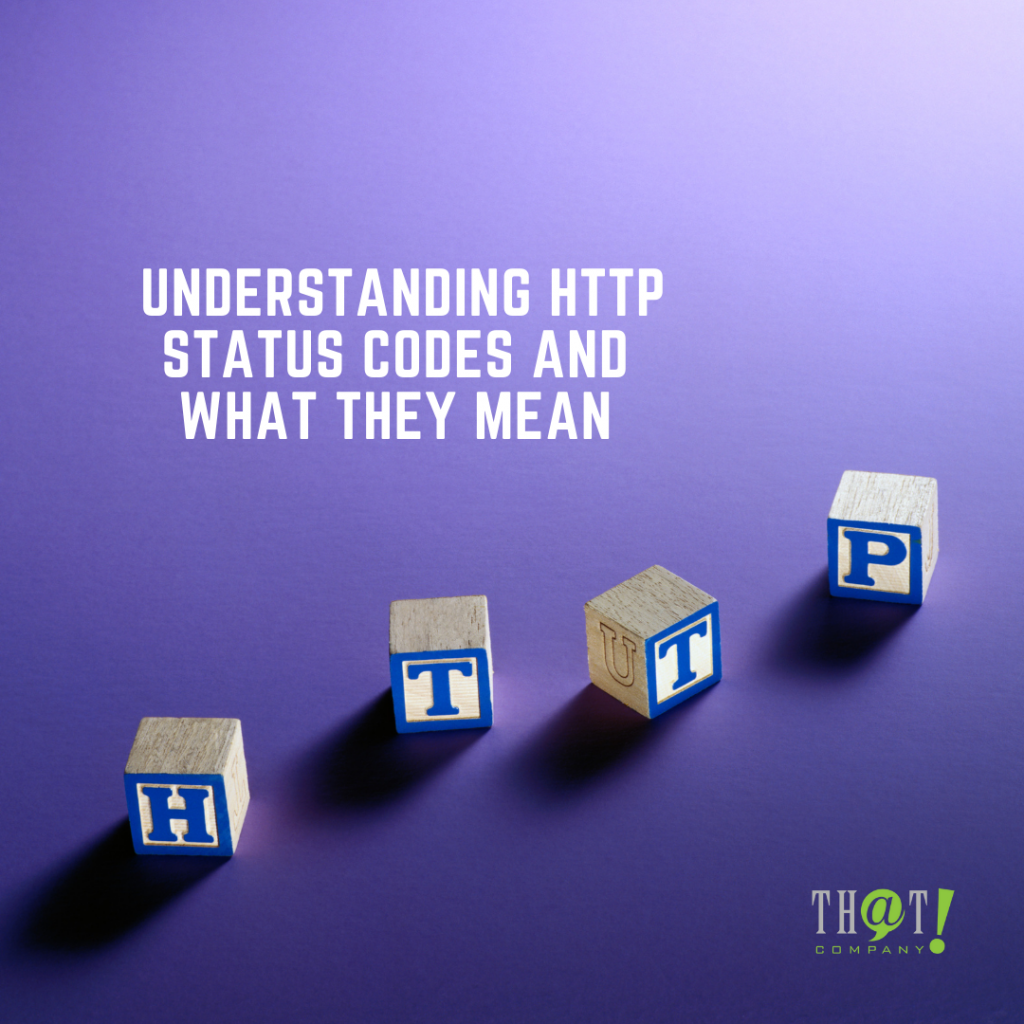


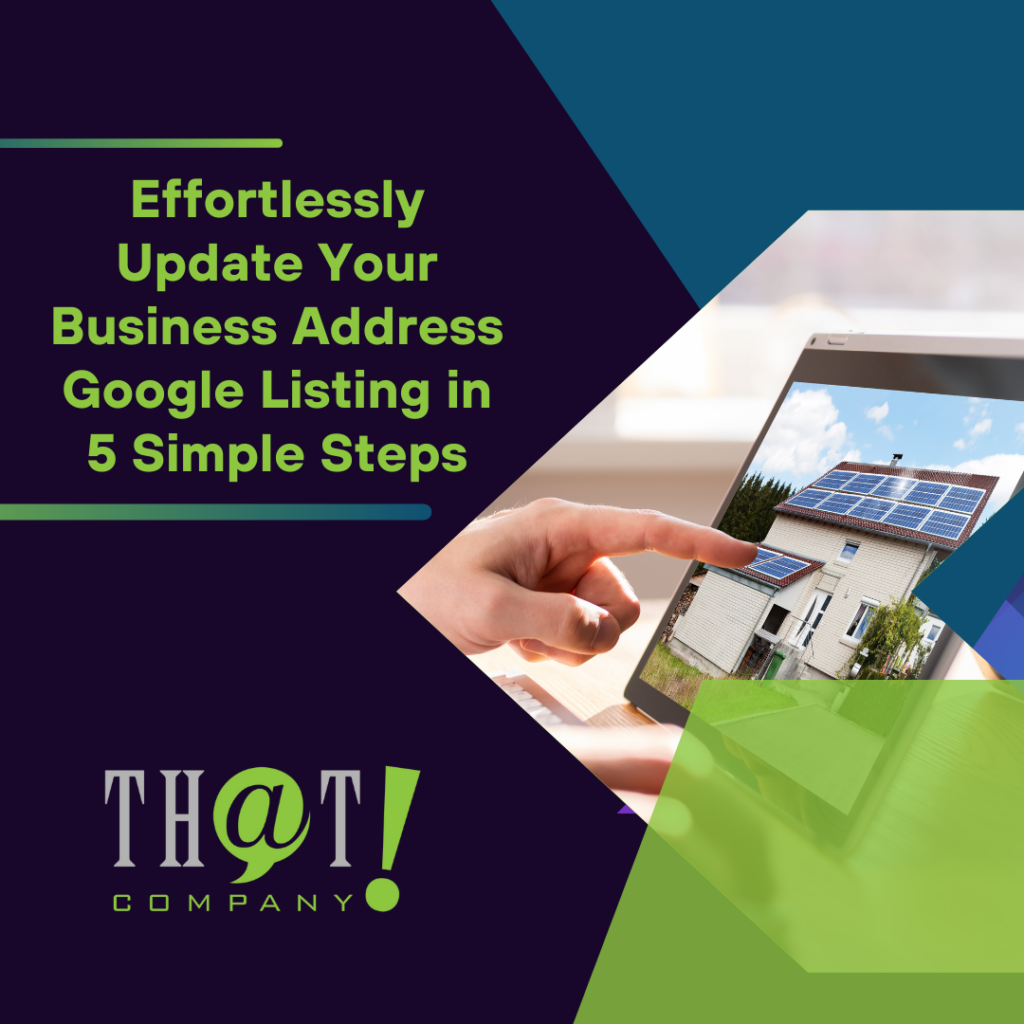

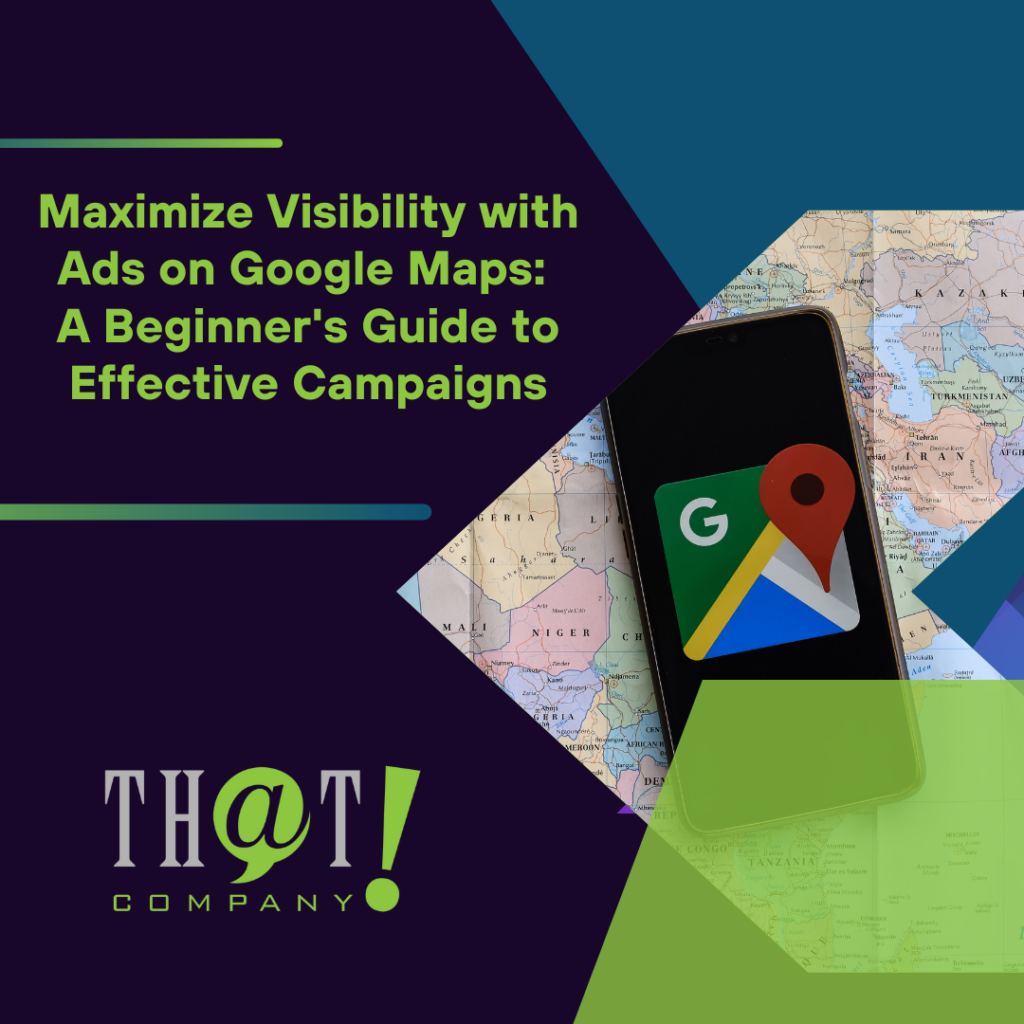
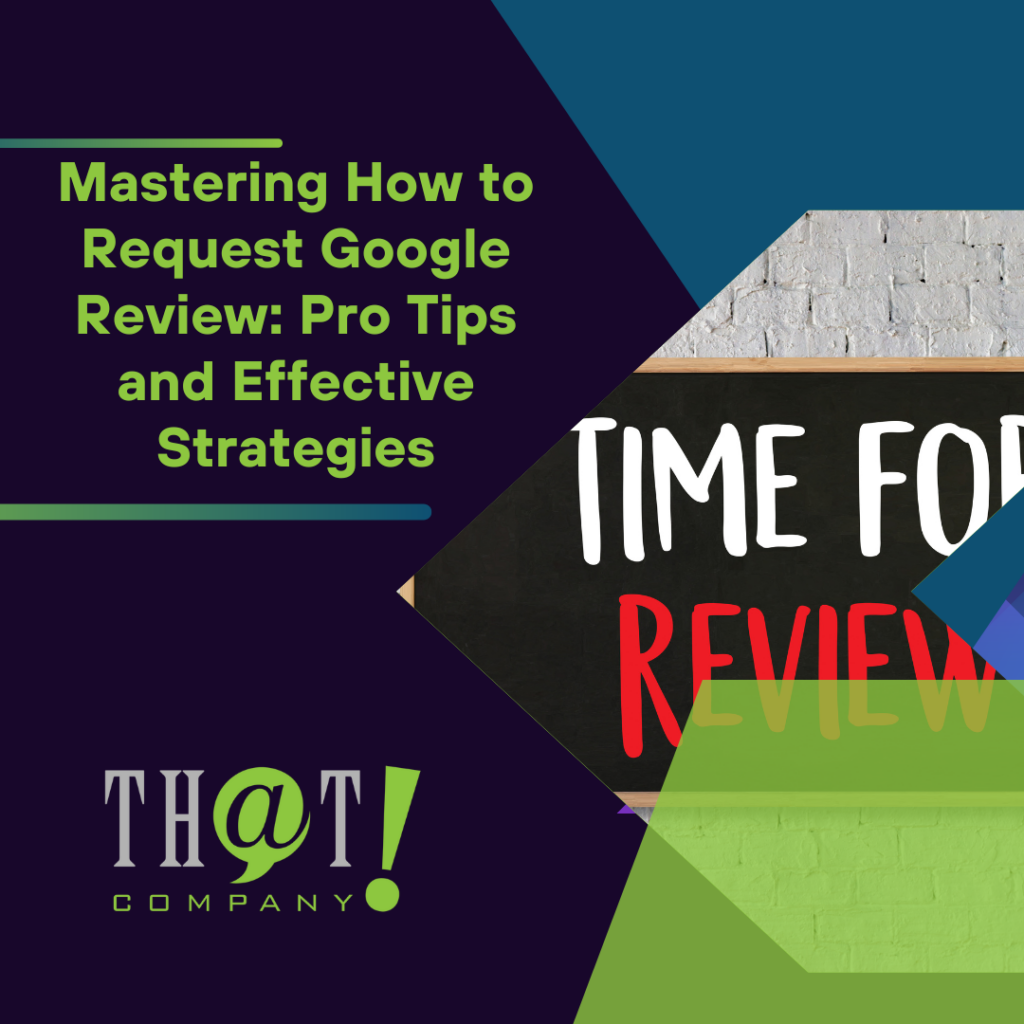

 Talk With Us
Talk With Us  Give Some Love
Give Some Love 


